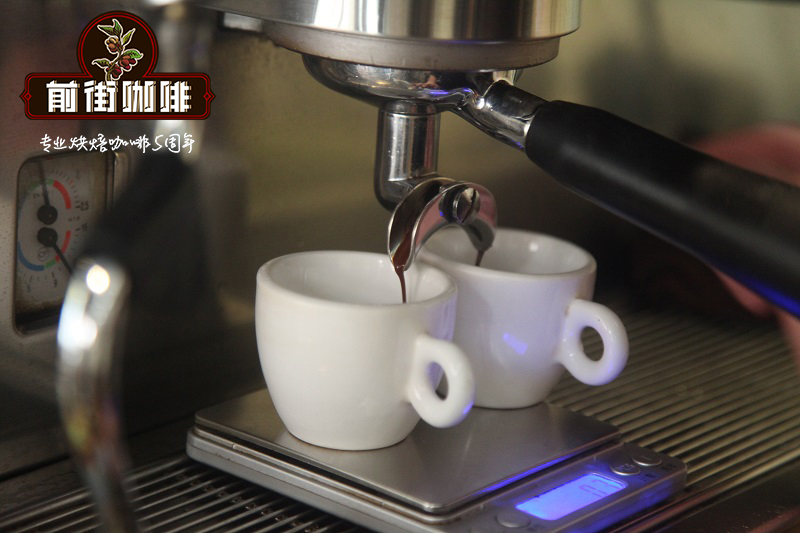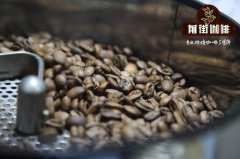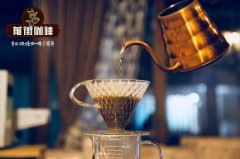Coffee honey treatment video _ coffee bean honey treatment suitable for brewing coffee _ honey treatment coffee price

Professional coffee knowledge exchange more coffee bean information please follow the coffee workshop (Wechat official account cafe_style)
Coffee treatment refers to the process of turning coffee fruit into raw coffee beans (seeds).
Generally speaking, there are three ways to deal with it, which are:
Solarization method
Washing method
The treatment methods between sun exposure and water washing include semi-washing (wet planing), Brazilian peeling and tanning, and honey treatment.
Solarization method: selection of beans → drying → shelling → screening and classification.
Washing method: selecting → to remove pulp → fermenting → washing → drying → shelling → selection and classification.
"wet planing method"
Wet planing is very common in Indonesia, which is different from the general washing and tanning methods.
The endocarp of washed, honey-treated or sun-dried beans is retained until the final bean body is dehydrated and hardened, and the moisture content is reduced to 12%, or sealed and stored in storage for 1-3 months before grinding off.
However, the wet planing method takes off the endocarp when the bean body is wet and soft, and the moisture content is as high as 30-35%, so that the surface of the raw bean is directly exposed, and then continue to dry. This is because Sumatra has a humid climate and a method developed according to local conditions to speed up drying. The drying time is shortened, the fermentation period of coffee beans is shortened, the sour taste is greatly reduced, the alcohol thickness is increased, and the caramel and fruit aromas are obvious, with slightly woody and herbal flavors, which is Mantenin's unique "regional flavor".
For example, this tiger Manning
Tiger Mantenin grows on a hillside of about 1500 meters. The humid tropical rain forest climate brings rich rainfall, and volcanic soil brings nutrients, but because of the constant humidity, [wet planing] is used to shorten the drying time, using 88 degrees 89 degrees water, granulated sugar size, Kono filter cup cooking, water powder ratio 1:14, steaming for 30 seconds, and then one stage brewing, obvious dark chocolate and cream taste, high cleanliness.
"peeling and tanning."
The quality of the sun-drying method is difficult to control, while the water-washing method consumes a lot of water, with an average of 10-20 tons of water per ton of coffee fruit to produce about 200 kilograms of coffee beans, which countries with poor water resources cannot afford. In the 1990s, taking advantage of the unique dry climate, Brazil invented the peeling and tanning method (pulped natural).
After many improvements, according to the version of Dr. Dr. Ernesto Illy, the process of peeling and sunbathing is as follows: the defective floating fruit of coffee fruit is removed through the sink, then the peel, pulp and part of the colloid layer are removed, and then washed for an hour. Because the immersion fermentation time is very short, the pectin is not easy to be washed away, and there is still pectin left on the bean shell, and then the sticky answer with shell beans are spread in the exposure field to dry. It is best to use an African viaduct with good permeability.
For example, the way this [Edini Manor in West Java] is treated with sun honey. Manual picking is used to ensure the stability of the fruit. After picking, the exocarp is removed and the flesh is preserved for sun treatment, also known as peel solarization. After about a month of sun drying, wash and other treatment, then let the beans stored for about half a month before packaging. The sole purpose of this process is to create a more complex and fuller flavor.
"Coffee beans treated with honey"
After Brazil's peeling and tanning method was spread to Central American countries such as Costa Rica and El Salvador, it was modified to be called honey treatment.
Honey treatment process: the process of making raw beans with mucous membrane for sun-drying. After the outer pulp of the coffee bean is removed, there will be a layer of sticky jelly. In the traditional washing method, it will be washed away with clean water, but because of the limitations of water resources in some high-altitude areas, this method of drying directly with pectin has been born.
Honey-treated coffee has higher sweetness, higher sugar content and higher alcohol thickness than washed coffee. (only if the same baking degree is compared)
According to the thickness of pectin planing, the length of sunshine time (or drying thickness), and the frequency of turning when drying, honey treatment can be divided into black honey, red honey, orange honey, yellow honey and white honey.
According to the thickness of the pectin:
Black honey: to 80% pectin, some manor black honey treatment almost does not remove pectin, so the drying time is the longest, it needs to last more than 14 days, in order to avoid drying too fast, cover will be used to block too strong sunlight, in order to make sugar conversion more fully.
Red honey: remove 25% pectin (the specific methods of each manor vary), the sun lasts for about 12 days, and shading sheds may also be used in the process.
Yellow honey: remove 40% pectin and receive maximum light drying for about 8 days.
Some producing areas and estates are distinguished according to the drying thickness and the number of turns, such as yellow honey and white honey, both retain 20-30% pectin:
Yellow honey: thick layer drying, less turning times, long drying time
White honey: thin layer drying, more turning times, short drying time.
For example, this one comes from Shumawa Manor, the owner Francisco Men retains most of the original forests in the park, maintains the ecological balance of the manor, presents a rich fruit flavor, and has a high sweetness, boil [Costa Rican black honey treated coffee beans] with V60, 15g beans, gouache ratio at 1:15, grind sugar to 225g, steam with 37g water for 30 seconds, and in the first stage, rinse 120g with medium water. It rushes out of the floral and berry aromas in the middle of the front, and in the second, rushes out a strong sense of black tea with a strong sense of red tea. When tasting, tomato acid is obvious, soft berry acid, bright and meticulous citrus acid and low raisins, nutty finish, strong sweetness.
With the coffee market's pursuit of a more extreme coffee flavor, many experienced and capable practitioners begin to manipulate the details of the honey processing process to make higher-quality coffee beans and show the possibility of coffee flavor.
For example, the timing of picking red coffee fruit is determined by instruments such as sugar meter. Coffee with the same maturity will taste cleaner, while sweeter red fruits will increase the sweetness of the coffee, and more mature fruits will increase the fermented aroma.
Honey treatment not only retains the cleanliness of water washing, although it is not as bright as water washing, but increases sweetness and caramel taste.
Finally, let's summarize the characteristics of various ways of handling raw beans:
Acidity: washing > semi-washing > honey treatment > wet planing > solarization.
Sweetness: sun > honey treatment > wet planing > semi-washing > washing.
Production risk: wet planing / solarization > washing / honey treatment > semi-washing
Installation cost: washing / semi-washing > honey treatment / wet planing > solarization
The amount of water used: water washing > semi-washing > honey treatment / wet planing method
Brand recommendation of honey treated coffee beans
The Costa Rican black honey-treated coffee beans roasted on Qianjie Coffee are fully guaranteed both in brand and quality. And more importantly, the performance-to-price ratio is extremely high, a pack of half a pound 227 grams, the price is only about 95 yuan. According to the calculation of 15 powders per cup of coffee, 15 cups of coffee can be made in a bag, which costs only about 6 yuan per cup, which is very cost-effective for coffee shops to sell dozens of yuan a cup.
Qianjie coffee: Guangzhou bakery, the store is small but a variety of beans, you can find a variety of unknown beans, but also provide online store services. Https://shop104210103.taobao.com
Important Notice :
前街咖啡 FrontStreet Coffee has moved to new addredd:
FrontStreet Coffee Address: 315,Donghua East Road,GuangZhou
Tel:020 38364473
- Prev

How to bake honey to treat coffee beans _ honey to treat coffee how to make coffee black honey treatment is it expensive
Professional coffee knowledge exchange more coffee bean information please follow the coffee workshop (Wechat official account cafe_style) honey coffee treatment, honey-like treatment, what a wonderful coffee term! This simple description can move people (after all, most people like honey). In fact, honey-treated coffee has become more and more popular among consumers recently. There is no other description.
- Next

Honey-treated coffee beans recommended producing area _ are Costa Rican coffee beans treated with black honey?
Professional coffee knowledge exchange more coffee bean information please follow the coffee workshop (Wechat official account cafe_style) Costa Rica is one of the familiar coffee producing areas, you must also often see beans like XX manor / processing plant honey treatment in Costa Rica. Speaking of which, someone may raise his hand and say, "teacher, I know!" Honey treatment is the bean treated with honey.
Related
- What is the meaning of lactic acid fermentation with coffee bean treatment?
- How to judge the state of foam by sound?
- How does the latte pull out the unicorn pattern? Come to get for a little trick to improve the flower pull!
- Will flower pulling affect the taste of the latte?
- Do you know the history of coffee?
- The difference between honey treatment and sun washing what is raisin honey treatment?
- What kind of milk can a novice use to make coffee foam to keep the foam longer? The correct method and skills of milking tutorial sharing
- Why do washed coffee beans taste sour? Flavor characteristics of washed Coffee
- Introduction to the skill of how to practice the size and height of water injection around the circle of hand-brewed coffee
- How do beginners practice coffee flower drawing from scratch?

